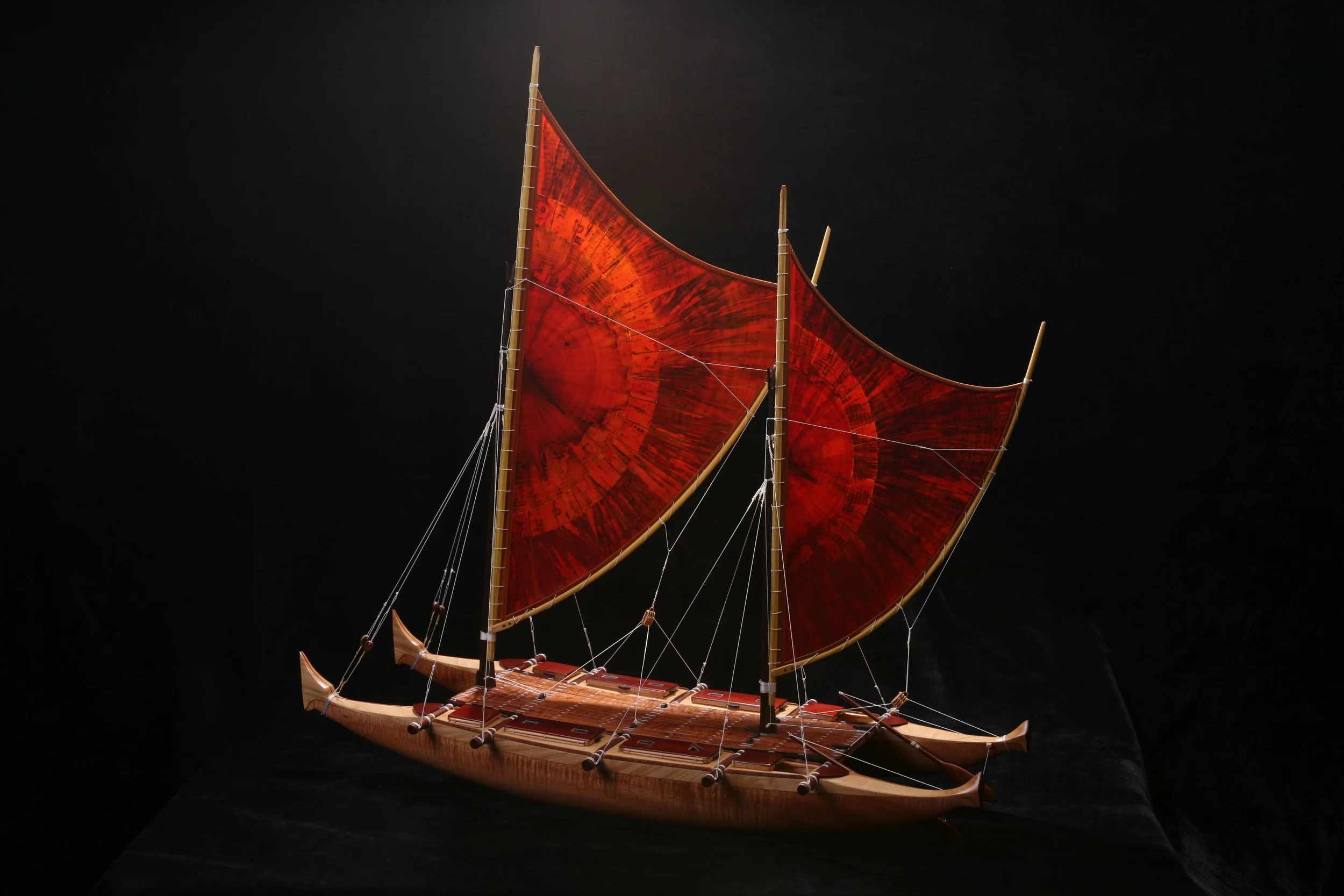

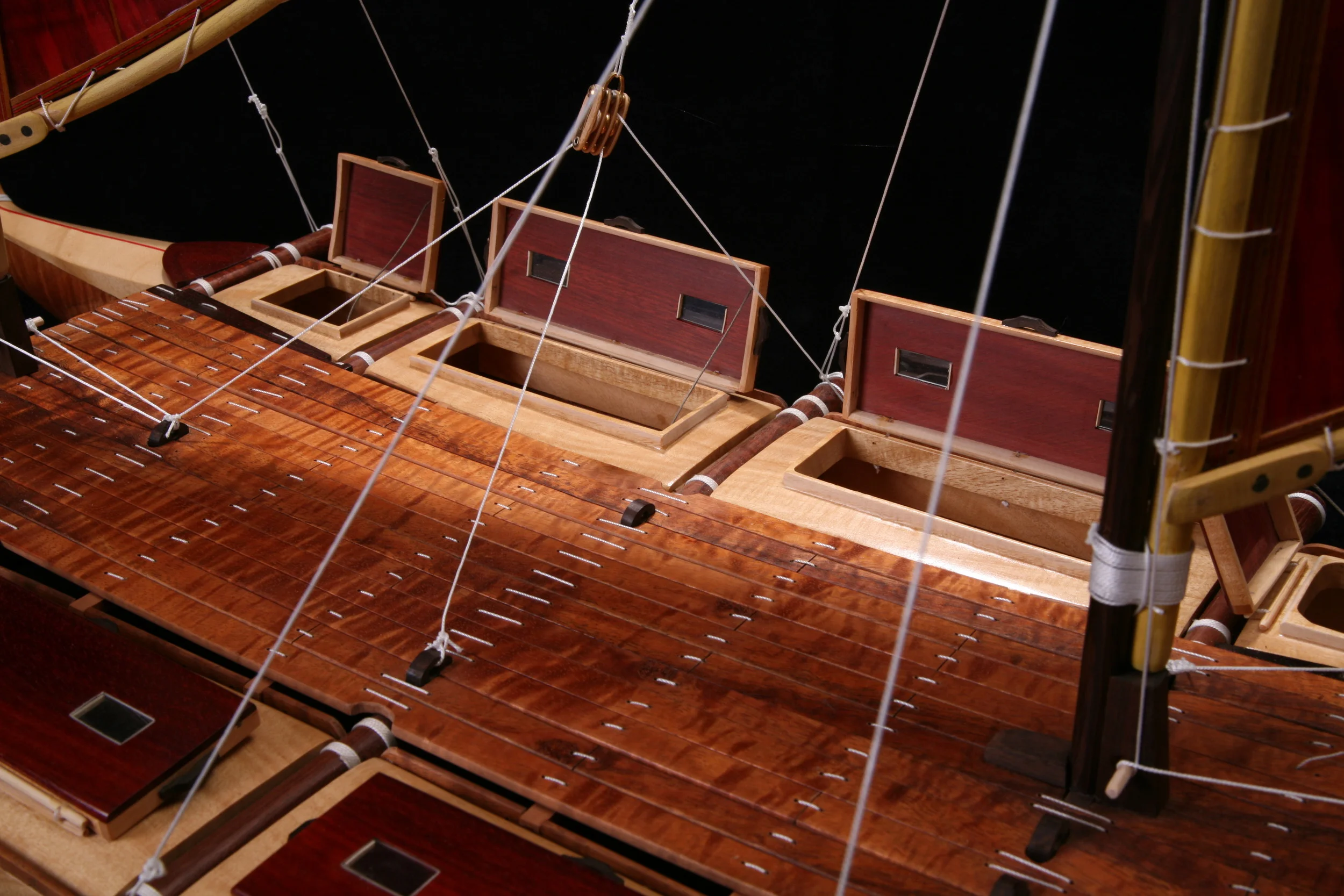
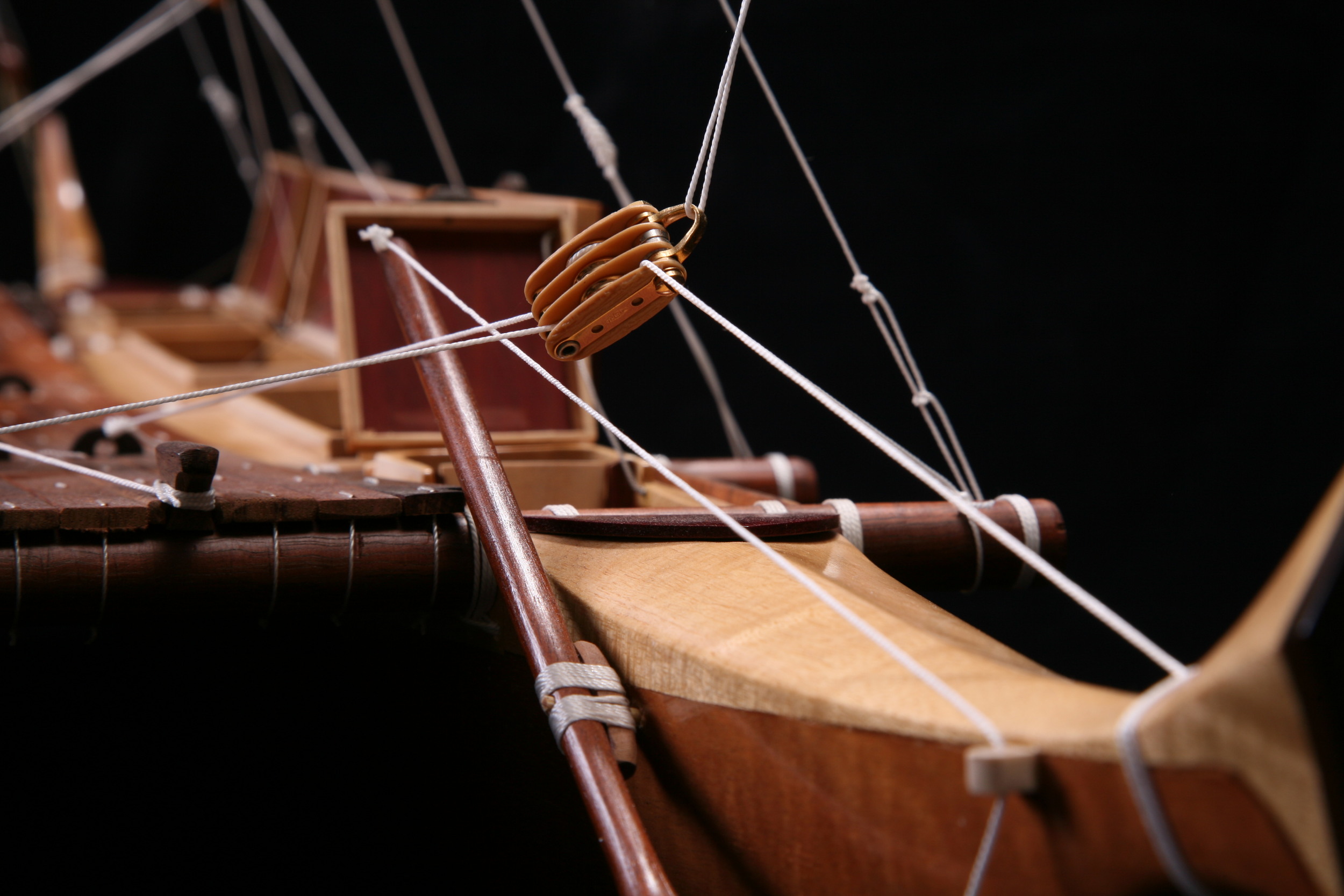
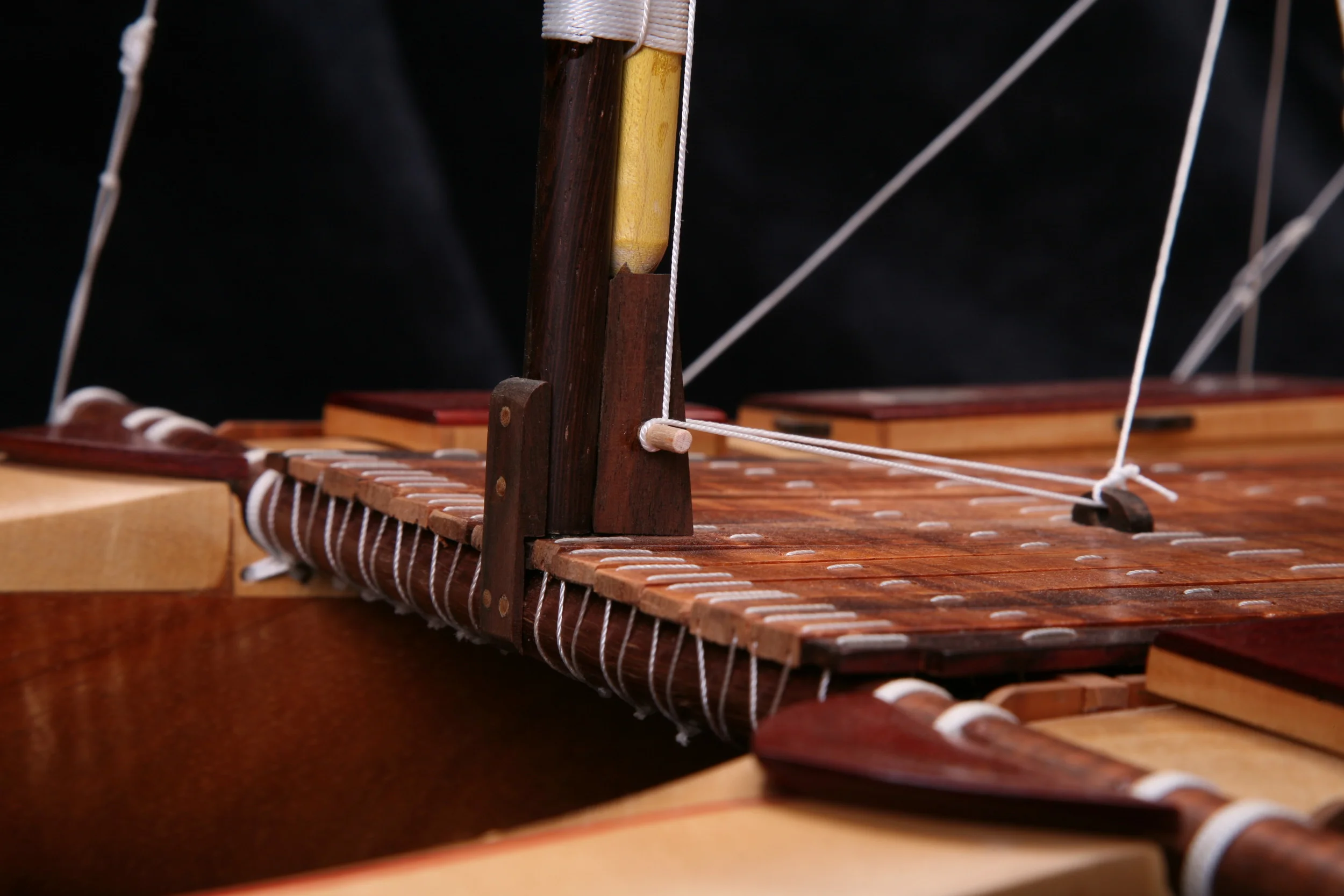
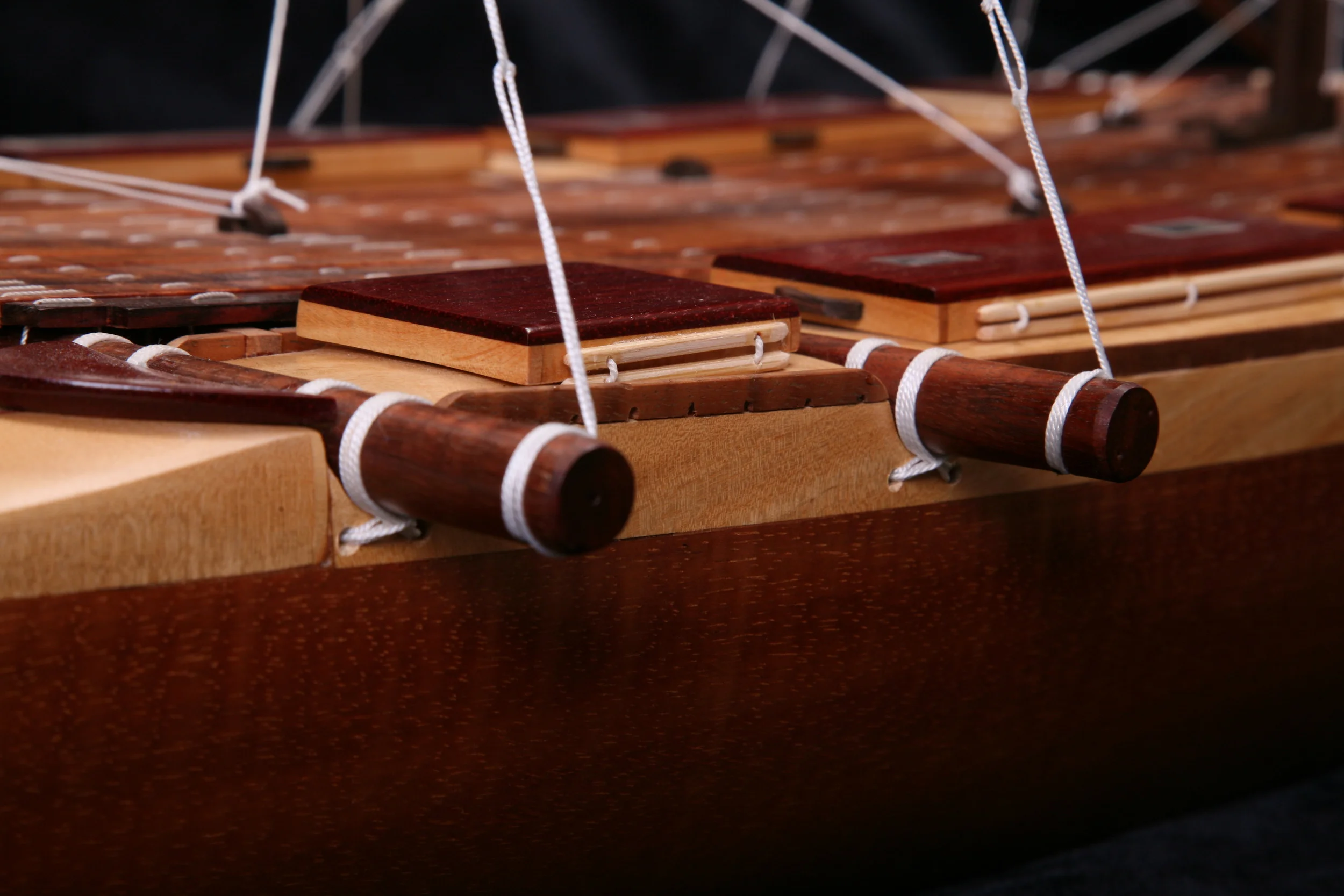
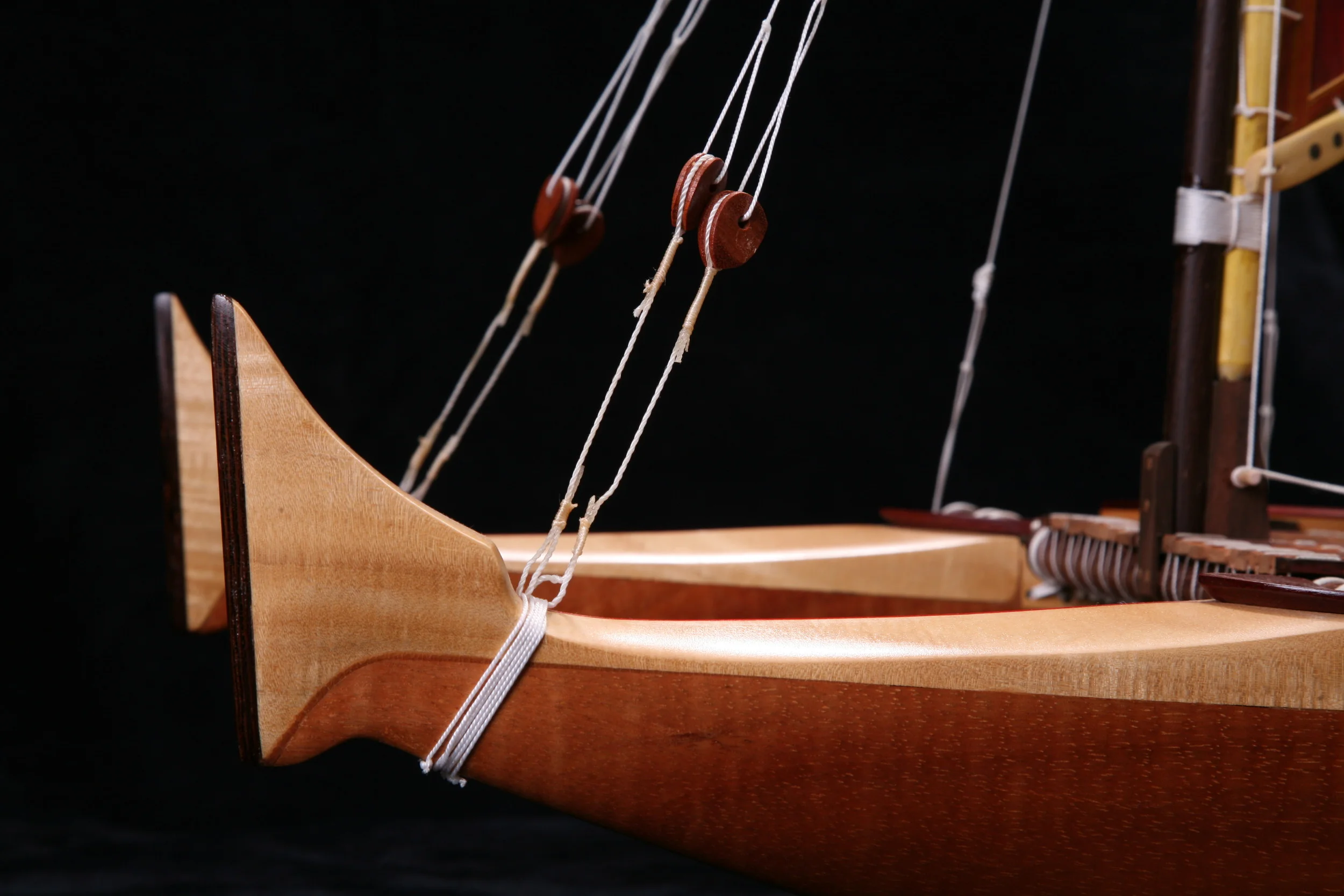
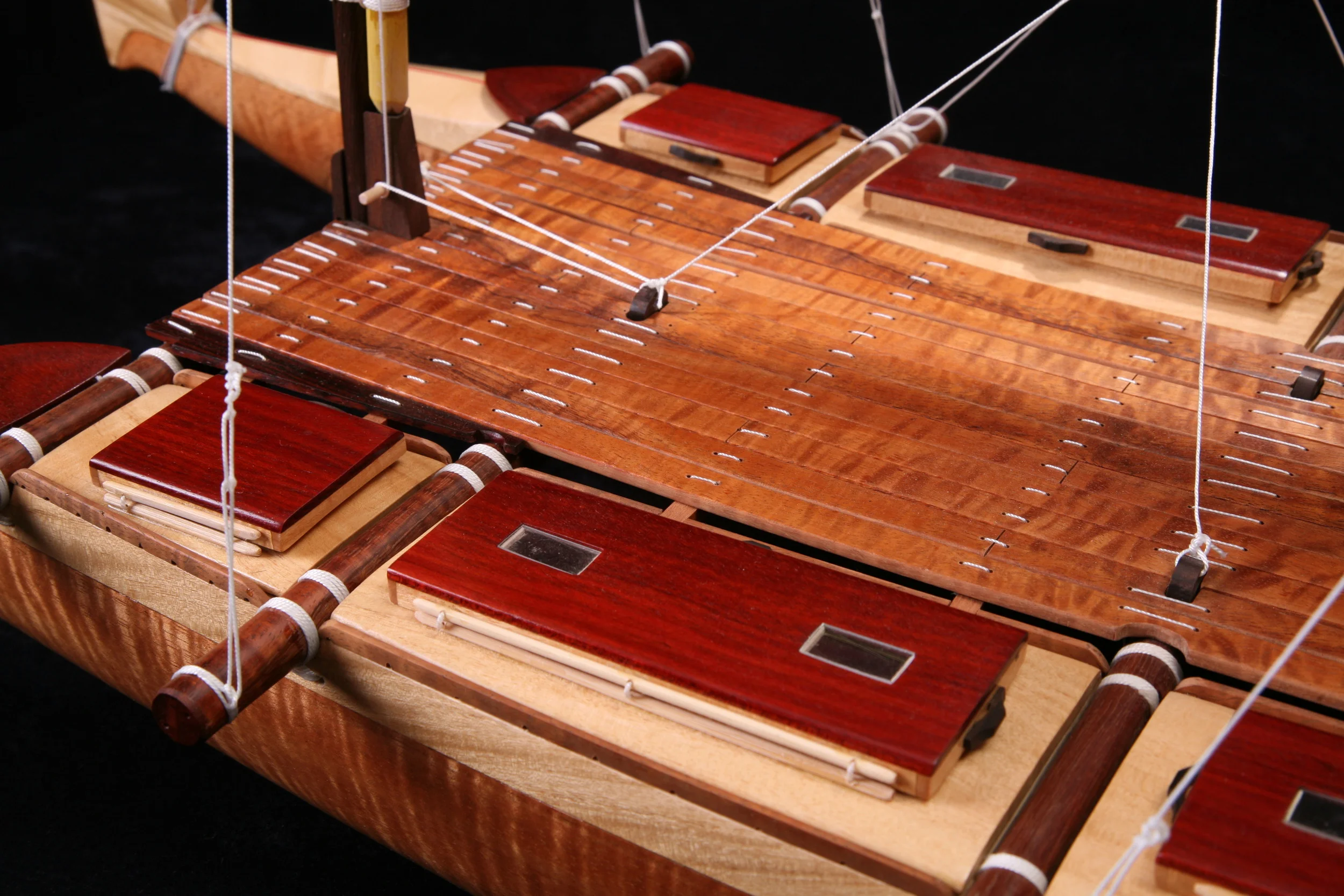
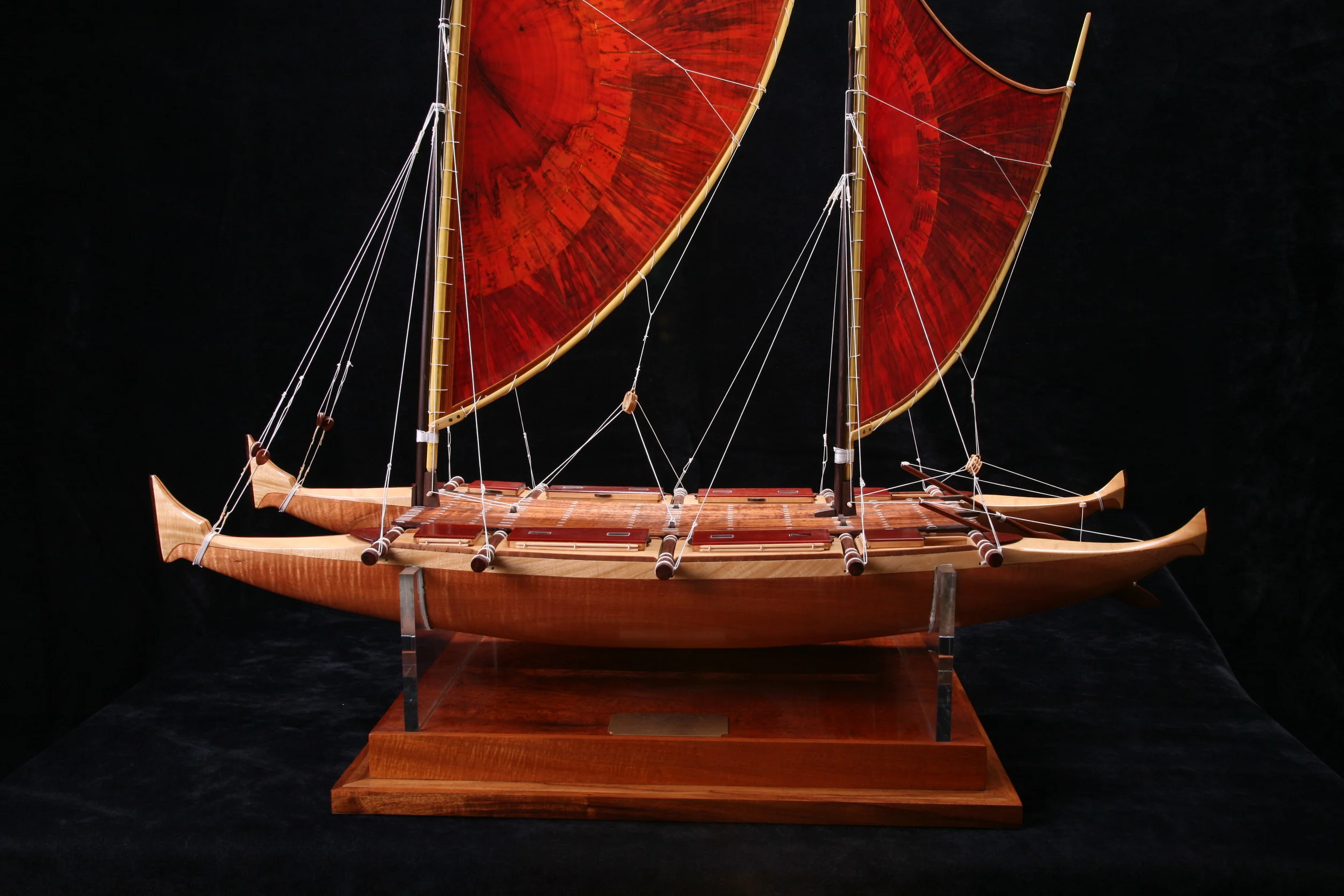
https://www.youtube.com/watch?v=R5F4PqATcgY
I have always been fascinated by the Pacific cultures and the multitude of different type of canoes associated with them, in particular those carved within the Polynesian Triangle, Micronesia and Melanesia. So my interest, as a canoe modeler, does not simply rest in re-creating ancient types of Hawaiian canoes or reproduce the Hokule'a, but also to make models of some of the most amazing vessels that were constructed long ago within Oceania but have all but disappeared from its islands. More over, and this is always a particular and exciting challenge, I love to reproduce those larger voyaging canoes that have recently been built in the South Pacific. What ever the type of canoe I decide to reproduce; it is a task that requires in depth research and my lasting gratitude goes towards the late Herb Kane without whom we would not be able to know the beautiful shape of some Oceanic canoes. I also like to refer to the works of Hadden & Hornell and the beautifully illustrated volumes of Jean Neyret. The internet has replaced books and it is while reading online about the Lapita culture, which is at the root of Polynesian culture and famous for its pottery style, that I became interested in the Lapita Voyage Project whose principals were Klaus Hympendahl, a German author and photographer, explorer, sailor and ship architect of catamarans James Wharram, and Hanneke Boon who is Wharram's design partner.
The objective of the Lapita Voyage Project was to build two double hull canoes and sail them from the Philippines to the island of Anuta, a route of 4,000 miles believed to be the one used by the Lapita culture during their eastward expansion. The name of the two canoes would be "Child of the Sea" or Tama Moana. They would be based on the construction style of Hawaiian voyaging canoes and incorporate design principles from the islands of Anuta and Tikopia. Their size would be 37 feet in total length with a beam overall of 14 feet. The length of the above model is 38 inches (96.5 cm) and was completed in March 2011. The model is sold.
Click here to see photos of this canoe during phases of it's construction.
Further reading regarding the Lapita canoe:https://www.lapitavoyage.org/concept_canoes.htmlruction.
https://www.youtube.com/watch?v=R5F4PqATcgY
I have always been fascinated by the Pacific cultures and the multitude of different type of canoes associated with them, in particular those carved within the Polynesian Triangle, Micronesia and Melanesia. So my interest, as a canoe modeler, does not simply rest in re-creating ancient types of Hawaiian canoes or reproduce the Hokule'a, but also to make models of some of the most amazing vessels that were constructed long ago within Oceania but have all but disappeared from its islands. More over, and this is always a particular and exciting challenge, I love to reproduce those larger voyaging canoes that have recently been built in the South Pacific. What ever the type of canoe I decide to reproduce; it is a task that requires in depth research and my lasting gratitude goes towards the late Herb Kane without whom we would not be able to know the beautiful shape of some Oceanic canoes. I also like to refer to the works of Hadden & Hornell and the beautifully illustrated volumes of Jean Neyret. The internet has replaced books and it is while reading online about the Lapita culture, which is at the root of Polynesian culture and famous for its pottery style, that I became interested in the Lapita Voyage Project whose principals were Klaus Hympendahl, a German author and photographer, explorer, sailor and ship architect of catamarans James Wharram, and Hanneke Boon who is Wharram's design partner.
The objective of the Lapita Voyage Project was to build two double hull canoes and sail them from the Philippines to the island of Anuta, a route of 4,000 miles believed to be the one used by the Lapita culture during their eastward expansion. The name of the two canoes would be "Child of the Sea" or Tama Moana. They would be based on the construction style of Hawaiian voyaging canoes and incorporate design principles from the islands of Anuta and Tikopia. Their size would be 37 feet in total length with a beam overall of 14 feet. The length of the above model is 38 inches (96.5 cm) and was completed in March 2011. The model is sold.
Click here to see photos of this canoe during phases of it's construction.
Further reading regarding the Lapita canoe:https://www.lapitavoyage.org/concept_canoes.htmlruction.
TAMA MOANA
Port site view